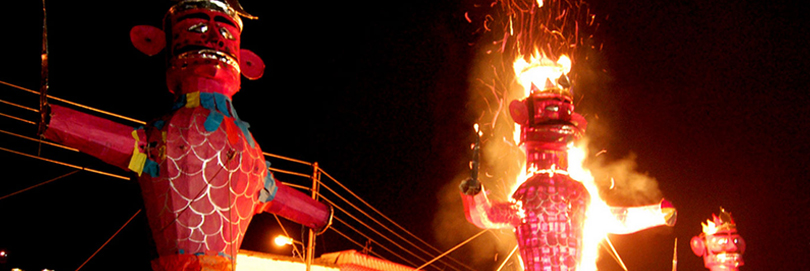
All that is good in mankind is concentrated in the deeds of the god-king Ram, the ruler of Ayodhya. Lord Rama, the moral man with his moral way of life are the reasons for celebrating India’s popular festival of Dussehra and Diwali. Diwali comes exactly 20 days after Dussehra on Amavas (new moon), during fortnight of kartik, some time in October or November.
On the day of Dussehra, Ram, killed the great demon Ravan, who had abducted Ram’s wife Sita to his kingdom of Lanka. Ram, along with his brother Lakshman and devoted follower Hanuman, and an army of monkeys fought a great battle to rescue his lovely wife Sita. The war against Ravan lasted for ten days. Sita had been returned to her husband Ram and they now make their way to Ayodhya in triumph and glory. Thus, it is on the Diwali day that Lord Ram, the incarnation of Lord Vishnu in the Treta Yug, returned to his capital Ayodhya after the exile of fourteen years.
Consequently, to commemorate the return of Ram, Sita and Lakshman to Ayodhya, people celebrate Diwali with the bursting of crackers and by lighting up their houses with earthen diyas. This grand style of celebration have continued, year after year. To this day, the whole of Ramayana is enacted in dramas staged in huge pandals and maidans, in cities, towns and villages, on the occasion of Dussehra and Diwali.
Source: httpss://www.diwalifestival.org/






























